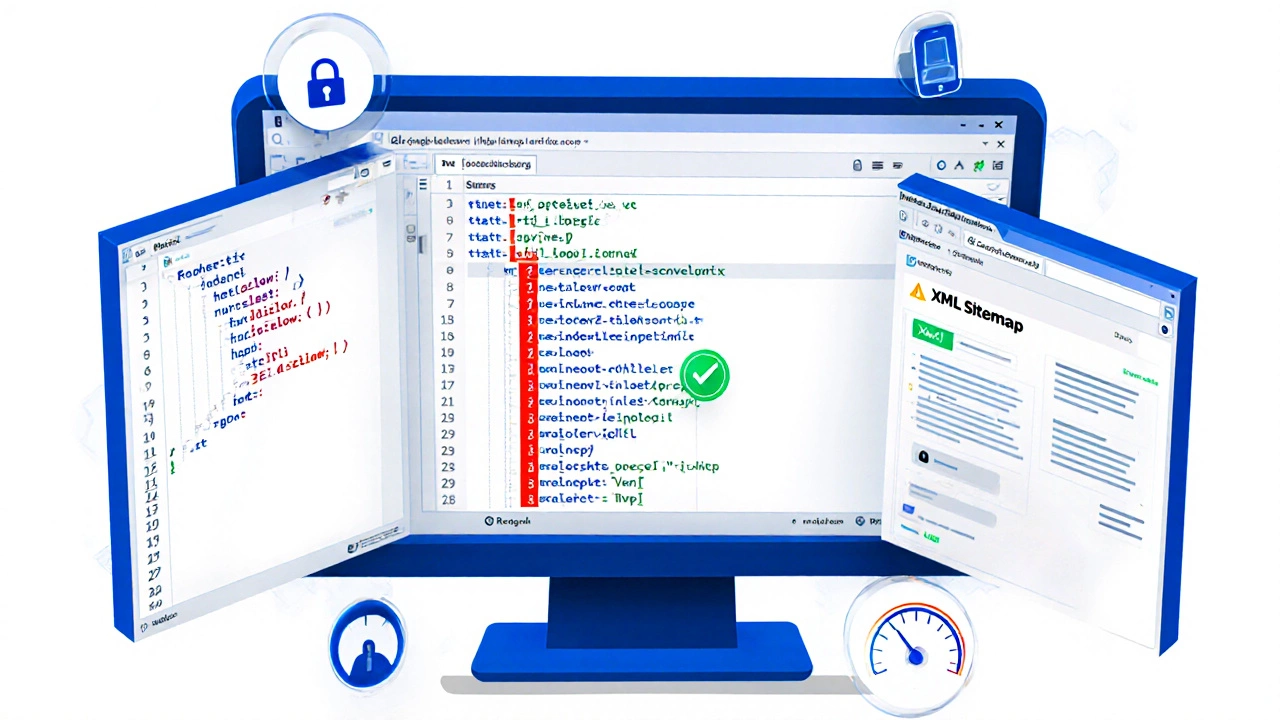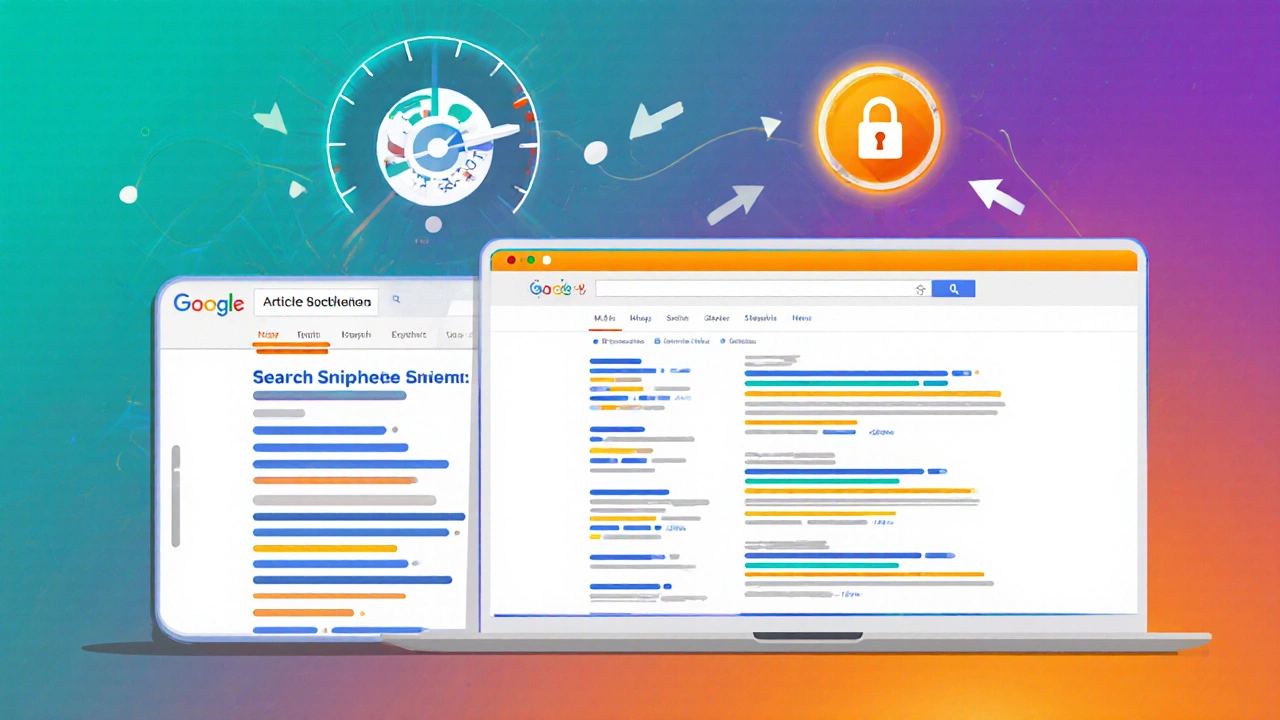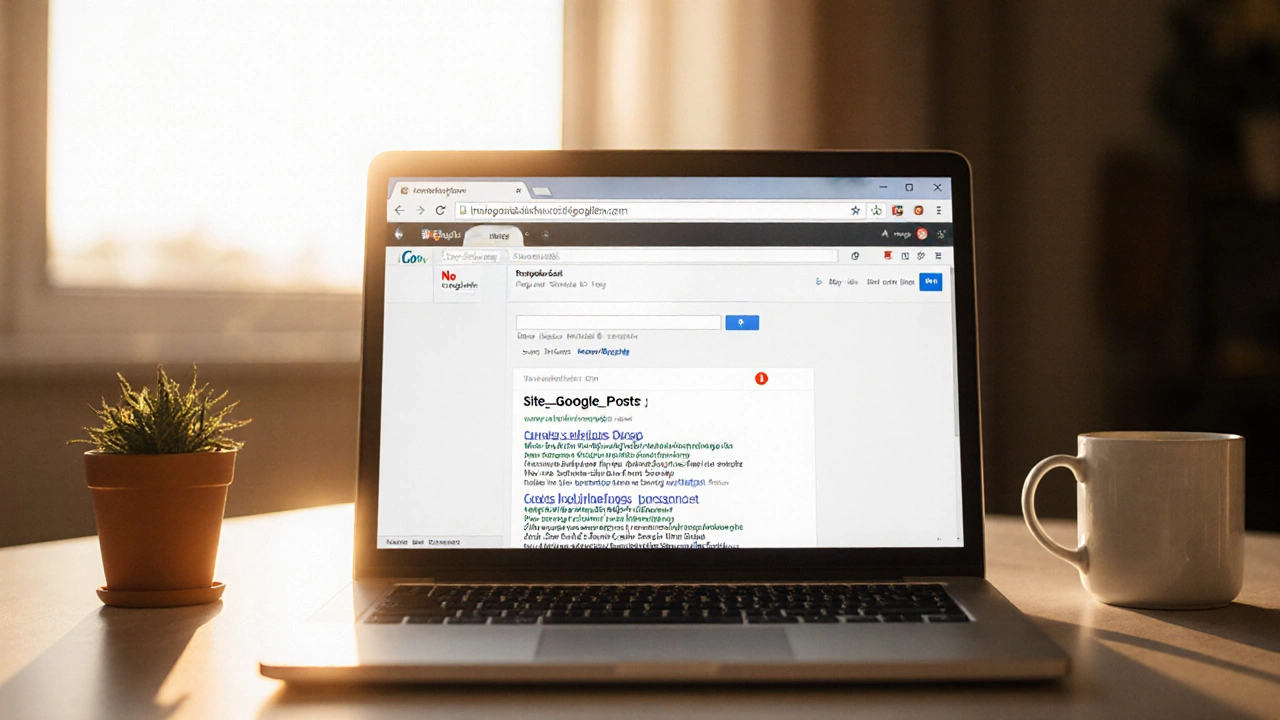WordPress Indexing Checker
This tool helps you identify common reasons why your WordPress site might not be showing up in Google search results.
Diagnostic Results
When you publish a WordPress website built on the open‑source CMS that powers over 40% of all sites, you expect it to appear in Google’s results within a few days. Instead, it stays hidden and you wonder what went wrong. Below is a no‑fluff, step‑by‑step guide that helps you uncover why your WordPress site isn’t indexed and how to get it visible fast.
Quick Summary
- Check robots.txt, meta‑noindex tags, and XML sitemap for blocks.
- Verify ownership and submit the site in Google Search Console.
- Use a solid WordPress SEO plugin (Yoast, RankMath, or All in One SEO) to manage titles, meta descriptions, and schema.
- Boost site speed, make the site mobile‑friendly, and enable HTTPS.
- Monitor coverage reports and request indexing for new or fixed pages.
Common Reasons WordPress Doesn’t Appear on Google
Before digging into tools, it helps to know the usual suspects:
- Robots.txt blocking Googlebot. A stray
Disallow: /line can shut the whole site down. - Pages set to
noindexvia meta tags or Yoast SEO settings. - Missing or malformed XML sitemap that tells Google what to crawl.
- Site not verified in Google Search Console, so you can’t see coverage errors.
- Slow load times or poor mobile usability triggering “soft” blocks.
- HTTPS not enabled - Google prefers secure sites.
- Duplicate content caused by improper canonical tags.

Step‑by‑Step Diagnosis Checklist
Grab a notepad and walk through each item. Tick them off as you go.
- 1. Crawl your site with a free tool. Google Search Console’s URL Inspection shows if Google can fetch a page.
- 2. Review robots.txt. Visit
yourdomain.com/robots.txt. Look forDisallow: /orUser‑agent: *lines that block important directories. - 3. Check meta‑noindex tags. View the source of a page and search for
noindex. If you see it, locate the setting in your SEO plugin. - 4. Validate the XML sitemap. Most plugins generate
yourdomain.com/sitemap.xml. Submit it in Search Console and watch for “sitemap error” messages. - 5. Verify HTTPS. Open the site with
https://. If you get a security warning, install an SSL certificate via your host. - 6. Test Core Web Vitals. Use PageSpeed Insights; aim for LCP < 2.5s, FID < 100ms, CLS < 0.1.
- 7. Look for duplicate content. Search for
rel="canonical"links; ensure each page points to its own URL.
Fixing Technical Blocks
Once you know what’s wrong, the fixes are usually quick.
Robots.txt
If you find a blanket Disallow: /, replace it with specific rules or remove the file altogether. A typical WordPress robots.txt looks like this:
User-agent: * Disallow: /wp-admin/ Allow: /wp-admin/admin-ajax.php Sitemap: https://yourdomain.com/sitemap_index.xml
Upload the updated file to the root folder via FTP or your host’s file manager.
Noindex Meta Tags
In Yoast SEO, go to Search > General > ‘Content Types’ and toggle off “Show in search results” for any type you don’t want hidden. For other plugins, the setting is usually under “Meta robots”.
XML Sitemap Issues
Regenerate the sitemap from your SEO plugin’s dashboard. In Yoast, click ‘SEO’ → ‘General’ → ‘Features’ and toggle the XML sitemap switch off then on. After regeneration, submit the new URL in Search Console’s ‘Sitemaps’ section.
Content & SEO Settings
Even with a clean technical setup, poor on‑page SEO can keep Google from ranking you.
- Title tags and meta descriptions. Each should be unique, under 60characters for titles and 155characters for descriptions.
- Header hierarchy. Use a single H1 per page, followed by H2, H3, etc.
- Internal linking. Connect related posts with contextual anchor text.
- Schema markup. Enable “Article” or “FAQ” schema via your SEO plugin - this helps Google understand the page type.
Here’s a quick comparison of the three most popular WordPress SEO plugins.
| Plugin | Free Tier | On‑Page Analysis | Schema Support | Price (Pro) |
|---|---|---|---|---|
| Yoast SEO | Full features for 1 site | Readability + SEO score | Basic article schema | £99 / year |
| Rank Math | Unlimited sites, advanced module | SEO score + 404 monitor | Rich schema library | £79 / year |
| All in One SEO | Unlimited sites, limited modules | SEO analysis only | Standard article schema | £79 / year |
Pick the one that fits your budget and feature need, then let it generate the meta tags automatically.

Speed, Mobile, and Security
Google’s algorithm weighs user experience heavily. A slow or insecure site can be crawled but rarely ranks.
- Page speed. Use a caching plugin (e.g., WP Rocket) and serve images through a CDN. Aim for a First Contentful Paint under 1.8seconds.
- Mobile‑friendly design. Test with Google’s Mobile-Friendly Test tool. If the layout breaks, switch to a responsive theme like Astra or GeneratePress.
- HTTPS. Install a free Let’s Encrypt certificate via your host or use a managed SSL service. Update the WordPress “Site Address” to use
https://and add a301redirect in .htaccess. - Core Web Vitals. Address large layout shifts by setting explicit width/height on images and using
font-display: swapfor web fonts.
Submit & Monitor with Google Search Console
Once technical and content fixes are in place, tell Google you’re ready.
- Log into Google Search Console and add your property if you haven’t already.
- Click “URL Inspection” for a key page, then “Request Indexing”. Do this for the homepage and any high‑value pages.
- Navigate to “Coverage” and filter for “Error” and “Valid with warnings”. Resolve any remaining 404s or redirect loops.
- Set up “Performance” reports to see clicks, impressions, and average position after a few days.
Google typically recrawls a fixed page within 24‑48hours, but larger sites might take a week. Keep an eye on the “Coverage” tab - if new errors appear, repeat the checklist.
Frequently Asked Questions
Why does my WordPress site show “Submitted URL not found” in Search Console?
The URL you submitted either returns a 404 error, is blocked by robots.txt, or has a noindex tag. Use the URL Inspection tool to see the exact cause, then fix the page or update the sitemap.
Can a new WordPress site be indexed without a sitemap?
Yes, Google can discover pages through internal links, but a sitemap speeds up the process and reduces missed pages. It’s best practice to generate one and submit it.
My site is HTTPS, but Google still says it’s “not secure”. Why?
Mixed content is the culprit - some resources (images, scripts) load over HTTP. Scan the site with a tool like WhyNoPadlock.com, fix the URLs, and clear caches.
Do I need a premium SEO plugin to get indexed?
No. The free versions of Yoast, RankMath, and All in One SEO cover the essential meta tags, sitemap generation, and schema markup needed for indexing. Premium features help with bulk editing and advanced insights but aren’t required for basic visibility.
How long does it take for Google to index a fixed page?
After you request indexing in Search Console, Google usually crawls the page within 24hours. Full site coverage can take up to a week, especially for large sites with many URLs.
By following this checklist you’ll move from “invisible” to “searchable” in a matter of days. Remember: technical health, solid on‑page SEO, and regular monitoring are the three pillars that keep any WordPress site thriving on Google.
